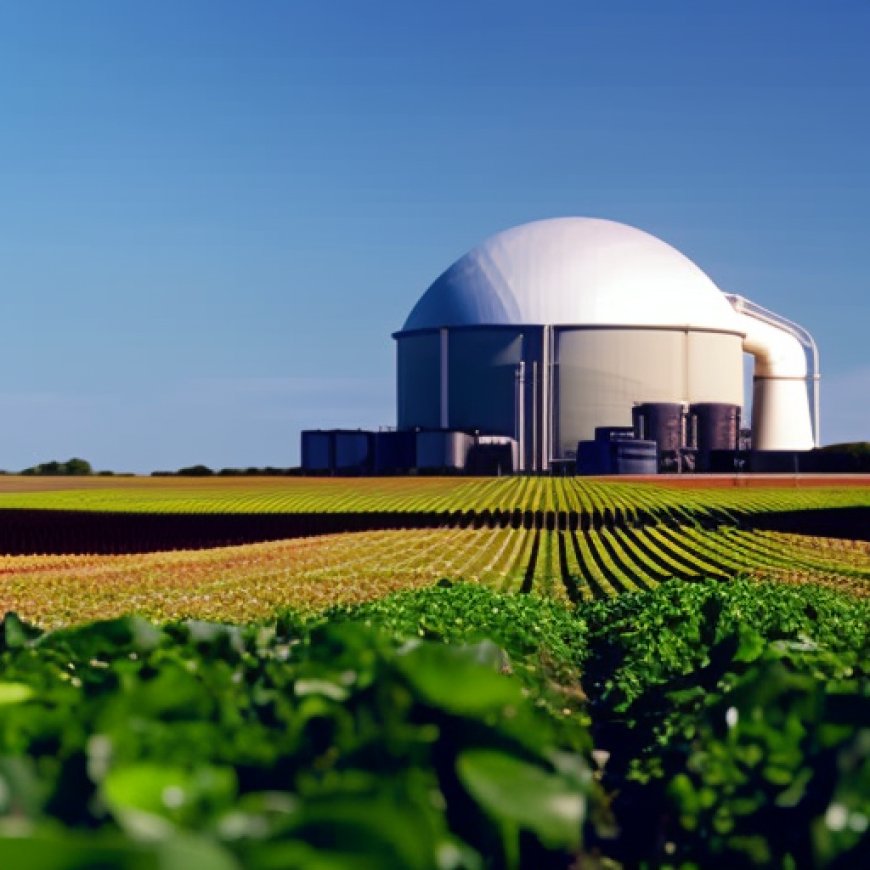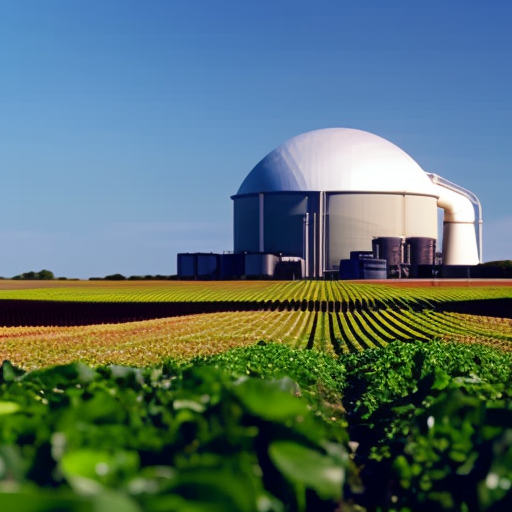Anaerobic Digestion 101: How to Make Renewable Natural Gas from Organic Waste
Anaerobic Digestion 101: How to Make Renewable Natural Gas ... AccessWire


NORTHAMPTON, MA / ACCESSWIRE / August 9, 2023
Farm Powered Anaerobic Digestion: A Sustainable Solution for Renewable Natural Gas
Farm Powered anaerobic digestion is a powerful process that recycles organic waste, mainly food and beverage waste from the manufacturing sector and dairy cow manure, into renewable natural gas. It’s a pretty simple process – think of it as a giant Crock-Pot that is full of methanogens – which are naturally found in cow manure – that gobbles up the food waste and the manure and creates biogas. That biogas is then cleaned, upgraded, and becomes a powerful tool to fight climate change – renewable natural gas. A drop-in replacement for fossil natural gas and is one of the tools in our toolbox to mitigate climate change.
The Importance of Sustainable Development Goals (SDGs)
- Goal 7: Affordable and Clean Energy
- Goal 9: Industry, Innovation, and Infrastructure
- Goal 12: Responsible Consumption and Production
- Goal 13: Climate Action
- Goal 15: Life on Land
Food waste is a fact of life, whether it be in a home or at a factory. If a batch of ice cream has too few chocolate chips, it can’t be sold. Food and beverage companies have to make a choice of how they choose to dispose of their inedible product – send it to a landfill or find a higher purpose for that waste. Turning that inedible waste into renewable energy is not only good for the planet, but can help a company reach its zero-waste to landfill goals, and gives them a great sustainability story to tell their investors and consumers.
For dairy farmers, manure presents some smelly challenges. Like food waste, you can’t have dairy cows without cow manure. There are several ways that farmers and food and beverage companies can handle their unavoidable waste. We believe that recycling them together through Farm Powered anaerobic digestion provides a sustainable solution for both dairy farmers and food and beverage manufacturers.
The Benefits of Farm Powered Anaerobic Digestion
- Positive impacts on waste management
- Renewable energy generation
- Greenhouse gas reduction
- Sustainable agriculture
Vanguard Renewables is taking its Farm Powered process nationwide. Learn more at www.vanguardrenewables.com
View additional multimedia and more ESG storytelling from Vanguard Renewables on 3blmedia.com.
Contact Info:
Spokesperson: Vanguard Renewables
Website: https://www.3blmedia.com/profiles/vanguard-renewables
Email: [email protected]
SOURCE: Vanguard Renewables
SDGs, Targets, and Indicators
| SDGs | Targets | Indicators |
|---|---|---|
| SDG 7: Affordable and Clean Energy | 7.2: Increase the share of renewable energy in the global energy mix | Not mentioned in the article |
| SDG 9: Industry, Innovation, and Infrastructure | 9.4: Upgrade infrastructure and retrofit industries to make them sustainable | Not mentioned in the article |
| SDG 12: Responsible Consumption and Production | 12.3: Cut food waste in half per capita at the retail and consumer levels and reduce food losses along production and supply chains | Food waste from the manufacturing sector is recycled into renewable natural gas |
| SDG 13: Climate Action | 13.2: Integrate climate change measures into national policies, strategies, and planning | The process of anaerobic digestion helps fight climate change by producing renewable natural gas as a drop-in replacement for fossil natural gas |
| SDG 15: Life on Land | 15.3: Combat desertification, restore degraded land, and soil | Not mentioned in the article |
1. Which SDGs are addressed or connected to the issues highlighted in the article?
- SDG 7: Affordable and Clean Energy
- SDG 9: Industry, Innovation, and Infrastructure
- SDG 12: Responsible Consumption and Production
- SDG 13: Climate Action
- SDG 15: Life on Land
2. What specific targets under those SDGs can be identified based on the article’s content?
- Target 7.2: Increase the share of renewable energy in the global energy mix
- Target 9.4: Upgrade infrastructure and retrofit industries to make them sustainable
- Target 12.3: Cut food waste in half per capita at the retail and consumer levels and reduce food losses along production and supply chains
- Target 13.2: Integrate climate change measures into national policies, strategies, and planning
- Target 15.3: Combat desertification, restore degraded land, and soil
3. Are there any indicators mentioned or implied in the article that can be used to measure progress towards the identified targets?
- No specific indicators are mentioned in the article.
- The article implies that the recycling of food waste into renewable natural gas contributes to cutting food waste and reducing greenhouse gas emissions, which can be indicators of progress towards Target 12.3 and Target 13.2, respectively.
4. SDGs, Targets, and Indicators
| SDGs | Targets | Indicators |
|---|---|---|
| SDG 7: Affordable and Clean Energy | 7.2: Increase the share of renewable energy in the global energy mix | Not mentioned in the article |
| SDG 9: Industry, Innovation, and Infrastructure | 9.4: Upgrade infrastructure and retrofit industries to make them sustainable | Not mentioned in the article |
| SDG 12: Responsible Consumption and Production | 12.3: Cut food waste in half per capita at the retail and consumer levels and reduce food losses along production and supply chains | Food waste from the manufacturing sector is recycled into renewable natural gas |
| SDG 13: Climate Action | 13.2: Integrate climate change measures into national policies, strategies, and planning | The process of anaerobic digestion helps fight climate change by producing renewable natural gas as a drop-in replacement for fossil natural gas |
| SDG 15: Life on Land | 15.3: Combat desertification, restore degraded land, and soil | Not mentioned in the article |
Behold! This splendid article springs forth from the wellspring of knowledge, shaped by a wondrous proprietary AI technology that delved into a vast ocean of data, illuminating the path towards the Sustainable Development Goals. Remember that all rights are reserved by SDG Investors LLC, empowering us to champion progress together.
Source: accesswire.com

Join us, as fellow seekers of change, on a transformative journey at https://sdgtalks.ai/welcome, where you can become a member and actively contribute to shaping a brighter future.







